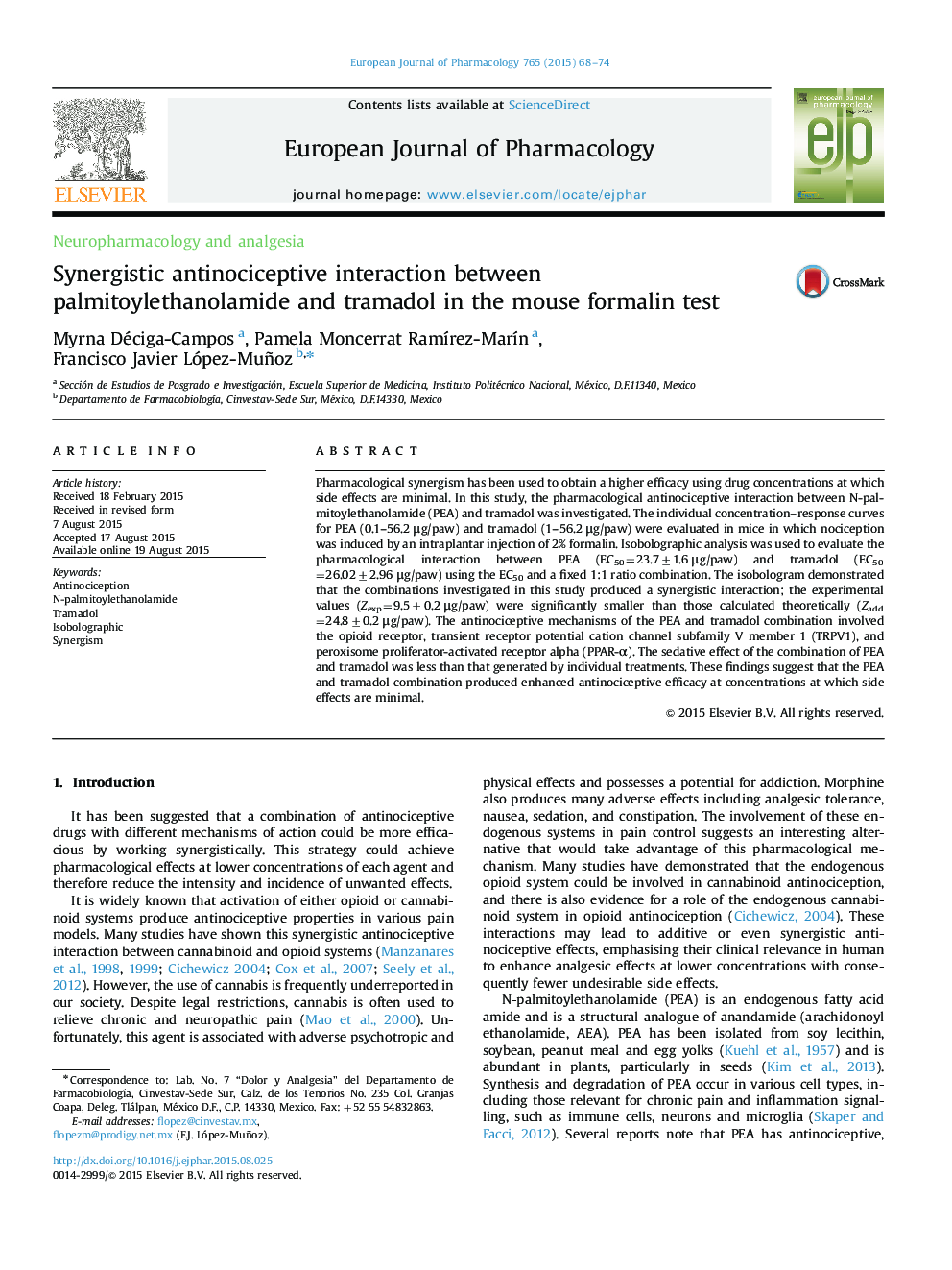| Article ID | Journal | Published Year | Pages | File Type |
|---|---|---|---|---|
| 5826885 | European Journal of Pharmacology | 2015 | 7 Pages |
Pharmacological synergism has been used to obtain a higher efficacy using drug concentrations at which side effects are minimal. In this study, the pharmacological antinociceptive interaction between N-palmitoylethanolamide (PEA) and tramadol was investigated. The individual concentration-response curves for PEA (0.1-56.2 μg/paw) and tramadol (1-56.2 μg/paw) were evaluated in mice in which nociception was induced by an intraplantar injection of 2% formalin. Isobolographic analysis was used to evaluate the pharmacological interaction between PEA (EC50=23.7±1.6 μg/paw) and tramadol (EC50=26.02±2.96 μg/paw) using the EC50 and a fixed 1:1 ratio combination. The isobologram demonstrated that the combinations investigated in this study produced a synergistic interaction; the experimental values (Zexp=9.5±0.2 μg/paw) were significantly smaller than those calculated theoretically (Zadd=24.8±0.2 μg/paw). The antinociceptive mechanisms of the PEA and tramadol combination involved the opioid receptor, transient receptor potential cation channel subfamily V member 1 (TRPV1), and peroxisome proliferator-activated receptor alpha (PPAR-α). The sedative effect of the combination of PEA and tramadol was less than that generated by individual treatments. These findings suggest that the PEA and tramadol combination produced enhanced antinociceptive efficacy at concentrations at which side effects are minimal.
Graphical abstractDownload high-res image (65KB)Download full-size image
